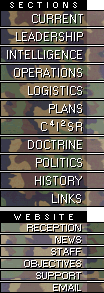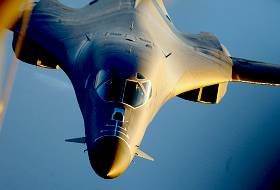





The mostly right stuff: How the Americans make war
December 26, 2001

he war in Afghanistan is essentially over. In just 11 weeks, the U.S. military and its allies have overthrown the Taliban and crushed Osama bin Laden's al-Qaeda forces, driving the remnants into a few mountain caves.
Critics of the war effort say that's nothing to boast about. The fight was a mismatch – the world's only superpower versus a broken country's ragtag army. In fact, this was a breathtaking feat of arms.
Fighting a war halfway around the world is difficult at the best of times. Fighting in Afghanistan, the graveyard of countless invaders, was an especially tall order.
Thrown into this conflict with no time to prepare, and few nearby bases from which to operate, the United States nevertheless launched a complex and intense air assault within a month of Sept. 11 and landed its first substantial ground force by Nov. 25. Special forces were in the country even earlier, harassing the enemy and guiding air strikes.
This was just the sort of war the United States was supposed to be incapable of fighting. For years, critics of the Pentagon have argued that a bloated, unwieldy U.S. military would be ill-equipped for the ugly little wars of the 21st century. With its 12 aircraft carrier groups, its 10 active divisions and its standing army of nearly 500,000 soldiers, the military was poised to fight set-piece battles with an adversary that no longer existed: the Soviet Union.
But, as Gregg Easterbrook points out in The New Republic, the "bloated" military turned out to be remarkably nimble, adapting itself with lightning speed to the conditions in Afghanistan.
The giant carrier groups were essential for launching the air campaign; aging, Cold War-era B-52 bombers played a big role in routing the Taliban in northern Afghanistan; tanker planes designed for a different kind of war kept U.S. planes in action 24 hours a day.
How did the U.S. military turn around so quickly? Sheer size is one reason. Washington spends more than $300-billion a year on its armed forces, more than Russia, China, Britain, France, Germany, Japan and India combined.
Another is technological skill. The United States is leagues ahead of its rivals in its use of unmanned warplanes, night-fighting equipment, high-altitude surveillance and precision-guided munitions. Nine out of 10 of the bombs dropped in Afghanistan so far have been precision-guided, compared with fewer than one in 10 in the Persian Gulf war a decade ago.
This time, the Americans used more than 4,000 bombs guided by the satellite-based global positioning system. They also deployed unmanned Predators to spot targets and, in some cases, fire missiles. On the ground, U.S. commandos could point laser binoculars at targets to call in pinpoint air strikes.
But more important than resources or technology was attitude. War is a serious profession in the United States and, like serious professionals anywhere, the men and women of the U.S. military are always looking for ways to do their job better. As British military historian John Keegan once put it, "War is a form of work, and America makes war, however reluctantly, however unwillingly, in a particularly workmanlike way."
Like any big organization, the U.S. military has its share of time-servers and dunderheads. This was the organization that spent $640 each for airplane toilet covers and $435 for hammers. The military has certainly made mistakes in Afghanistan that cost civilian lives, but no armed forces in the world can match its proficiency or its professionalism.
The U.S. military had a job to do in Afghanistan. It did it with dazzling skill.
Text source: Marcus Gee, The Globe And Mail, 22 December 2001
© 2001 CheckPoint |














